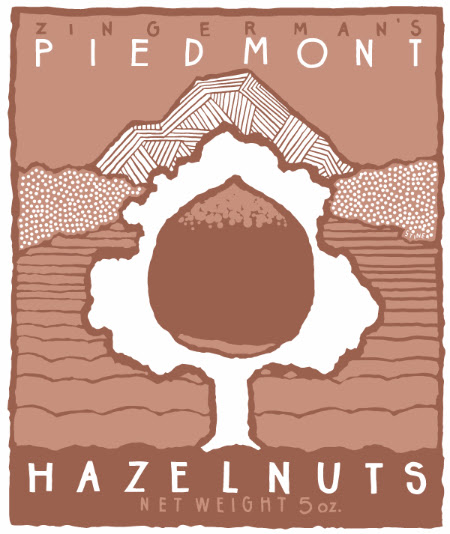The Northern Italian region of Piedmont is famous for its hazelnuts. That reputation might come from the fact that it’s the birthplace of the genius-level chocolate-hazelnut pairing called gianduja. When Napoleon instituted a Mediterranean naval blockade that caused the price of cacao to skyrocket, an enterprising chocolatier in Turin stretched out his chocolate supply by mixing in ground hazelnuts to make small, soft bonbons. A century and a half later, when the second world war caused chocolate prices to spike again, Pietro Ferrero, a pastry maker in Alba, took that idea a step further by mixing up chocolate and hazelnut into a spread. Twenty years later it was given the name Nutella, and Piedmont’s reputation of the center of the hazelnut world was set.
These days Turkey produces more than 70% of the world’s hazelnuts—including most of the ones used in Nutella. Piedmont accounts for just 2% of the world’s hazelnut supply. But its hazelnut fame is still justified. Time and again, tasting after tasting, it’s clear to me and many others that Piedmont’s hazelnuts are the most delicious in the world.
In Piedmont, they grow a particular varietal of hazelnuts called Tonda Gentile.
The trees are low yielding. They’re also susceptible to blights and pests. But the nuts that they produce are intensely flavorful: rich, nutty, just sweet enough. They taste more hazelnutty than other hazelnuts. The flavor is so prized that in the Piedmont it’s protected by an IGP, or a protected geographical status, like Parmigiano Reggiano or Champagne.
Hazelnuts grown in Turkey or here in the US tend to be more woody and bitter by comparison. The hazelnuts grown in the US are mostly a varietal called Barcelona, which was brought over to Oregon from Spain around 1800. Barcelonas are fine, but they’re more tannic and lack the rich, full flavor of Tonda Gentiles. (In the US, we can’t even grow Tonda Gentile hazelnuts. Across the country, we have a fungus called the Eastern Filbert Blight that wipes out Tonda Gentiles.)
We’ve got a stash of hazelnuts from Piedmont through D. Barbero, our longtime source for hazelnut torrone during the holidays.
Barbero has been making confections in the Piedmont town of Asti for five generations, since 1883. When you walk into their production facility you’re enveloped in the sweet aroma of toasty hazelnuts and sugar. If you close your eyes, stick your nose in a bag of Piedmontese hazelnuts and inhale deeply, it’s easy to imagine yourself transported to the Barbero kitchen.
Barbero gets their hazelnuts from a single family farm, located on green, rolling hills about an hour south of Asti. Around the end of August, the harvest begins when the ripe hazelnuts fall from the trees. The nuts are collected, dried, shelled, and separated by size. When the raw hazelnuts arrive to Barbero, they do three things to make the nuts even better and ensure that they don’t take on any bitterness. First, they start by roasting the hazelnuts in small batches in a coffee roaster. They keep a close eye on the nuts during roasting, because even just a minute or two too long can wipe out the nuances of the hazelnut flavor and make them bitter. Next, they take the skins off. That’s key. The skins contain a lot of astringent tannins, and left on they make the hazelnuts taste bitter. Finally, they store the hazelnuts carefully in cool conditions. A common flaw in whole hazelnuts that you find in stores is that they’ve gone rancid, a special form of bitterness. Here in Ann Arbor, we keep the hazelnuts stored in the fridge to stave off rancidity—you should, too.
All the little steps add up. These hazelnuts are slightly sweet, rich, and, with no bitterness to get in the way, really nutty. They’re really easy to snack on. A coworker told me the other day that when she tried them for the first time, she immediately wanted to send a bag to all of her friends and family so they could try them, too. She must be a lot more generous than I am. I’d eat four or five bags by myself!
Six things to do with whole hazelnuts—if you don’t eat the whole bag out of hand first:
1. Bake them into biscotti, cakes, or some ultra-decadent brownies.
2. Crush them a bit with a mortar and pestle or towel and rolling pin, then toss them in a salad with arugula, figs, and a bit of prosciutto.
3. Whip them into a creamy soup with parnsips and leeks.
4. Grind them into a decadent cream sauce for pappardelle or fettuccine.
5. Chop and toss them onto vegetables, like sauteed greens or roasted brussels sprouts.
6. Put a handful out with nutty cheeses and fresh or dried fruits for a simple dessert spread.

